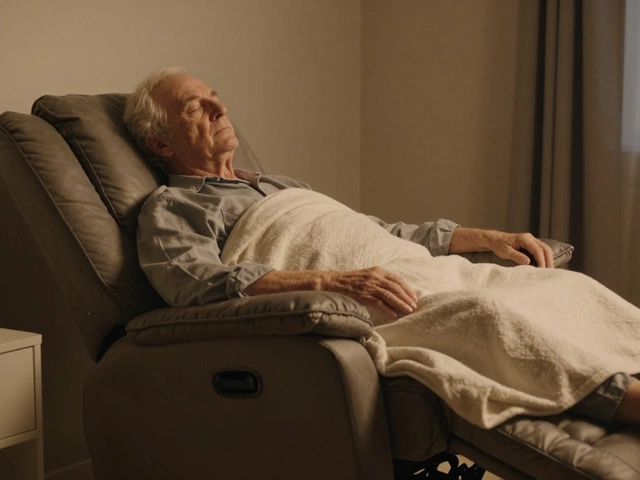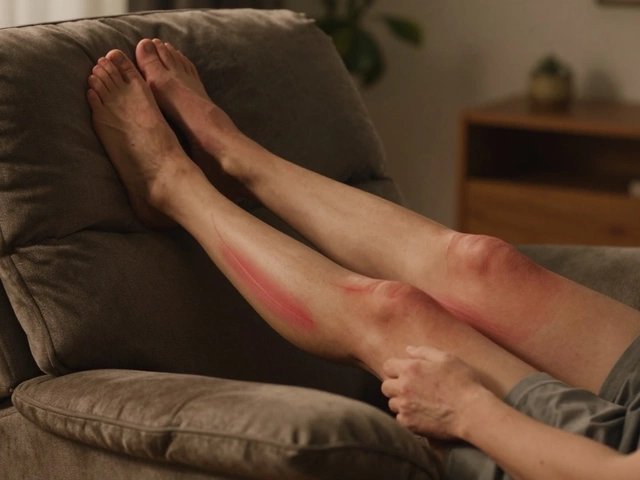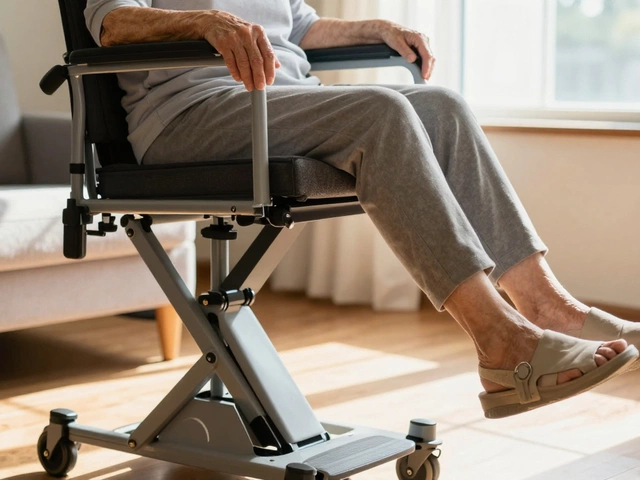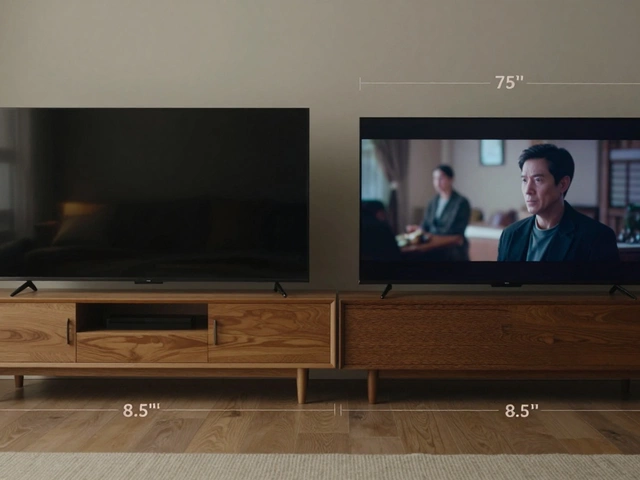There’s nothing quite like sinking into a comfy chair outdoors right after sunset, only to wonder if those scattered drops from last night’s dew are a sign you should be more protective. Whether you’re a seasoned backyard enthusiast or only recently put together a patio set, you’ve probably asked yourself if it's actually necessary to cover up your patio furniture every single night. People swap stories about ruined cushions or surprise morning rust, but is a nightly ritual actually worth your time and effort?
Why People Cover Patio Furniture at Night
It might sound a little excessive to fuss over your furniture like it’s a newborn, but many folks swear by the routine of tucking outdoor pieces in after the sun goes down. The main idea: prevention saves money and keeps your setup looking sharp. Sure, rain is a big concern, but even clear nights bring heavy dew. This moisture can quickly soak into wood, metal, or fabric, eventually leaving a mark. Toss in regular pollen, urban dust, and, if you’re in a place with lots of birds, let’s just say evenings seem to invite accidents.
All sorts of critters come out at night too. Squirrels, raccoons, or even persistent cats have a knack for finding an expensive seat to nap on. Worse, spider webs and bug nests pop up just when you aren’t looking. Researchers from the University of California once clocked patio dust levels: urban furniture left uncovered gathered nearly 30% more grime by morning compared to covered sets — that’s just after a single night. Small stuff, but it adds up.
Another big factor is UV radiation. Now, you might think the sun’s gone at night, so what’s the rush? But evening hours often bring increased humidity, which combines with leftover heat to trigger breakdown in certain plastics and finishes. Left unchecked, mildew and mold thrive after a warm, damp night. Some people even report “mildew blooms” on cushions that were left out just once following a muggy July day.
You’ve probably heard stories, especially after summer storms, where not covering up meant your next barbecue involved rusty chairs and permanently water-stained upholstery. Not everyone has a spare garage or shed, so covers become like a simple insurance plan. Do keep in mind, though, that not every weather app gets dew or morning fog predictions quite right, and even a cloudless night isn’t as risk-free as it looks.
The Science of Outdoor Furniture Damage
Talking about outdoor gear, it helps to break down what’s really happening out there. Most patio furniture is built tough — think powder-coated steel, weather-resistant woods (like teak or eucalyptus), all-weather wicker, polywood, or heavy-duty plastics. Yet, all these materials have limits. Moisture is enemy number one. Water seeps into joints, causing expansion and, in wood, warping or rot. Metals? They oxidize and rust. Fabrics aren’t spared either; they trap water, then attract mildew and fade with every wet-dry cycle.
Here’s where numbers get interesting. Studies have found that, on average, unprotected outdoor cushions last two to three years less than covered ones in humid climates. For metals, signs of rust often appear within one to two seasons if left exposed at night — especially with frames made of steel rather than aluminum. According to a survey by the American Home Furnishings Alliance, up to 40% of outdoor furniture replacements are directly related to water or dew damage rather than direct rain or storms. That’s a lot of extra spending that could’ve been let off with a few minutes of prep each night.
Temperature swings matter, too. When days are hot and nights are cool, condensation forms. This extra moisture speeds up paint chipping, wood checking, or the slow breakdown of synthetic rattan. And it’s not just the outside that’s at risk — even covered storage boxes show less dampness when their contents are shielded at night.
Here’s a quick look at how different materials fare, based on real climate testing:
| Material | Common Nighttime Risks | Improvement with Covers |
|---|---|---|
| Powder-Coated Steel | Rust, paint bubble | Rust delayed by 2+ years |
| Teak or Hardwood | Warping, mildew | Fewer splits, stays cleaner |
| Plastic/Resin | Discoloration, cracking | Lasts 3+ years longer |
| Outdoor Fabrics | Mildew, fading | Colors stay vivid |
Pets and wildlife can also chew or claw at uncovered pieces, which is another silent but common cause of damage. Anyone who’s spotted squirrel nibbles on their new chaise can relate. Protecting your investment isn’t just paranoia — it’s responding to what’s out there, night after unpredictable night.
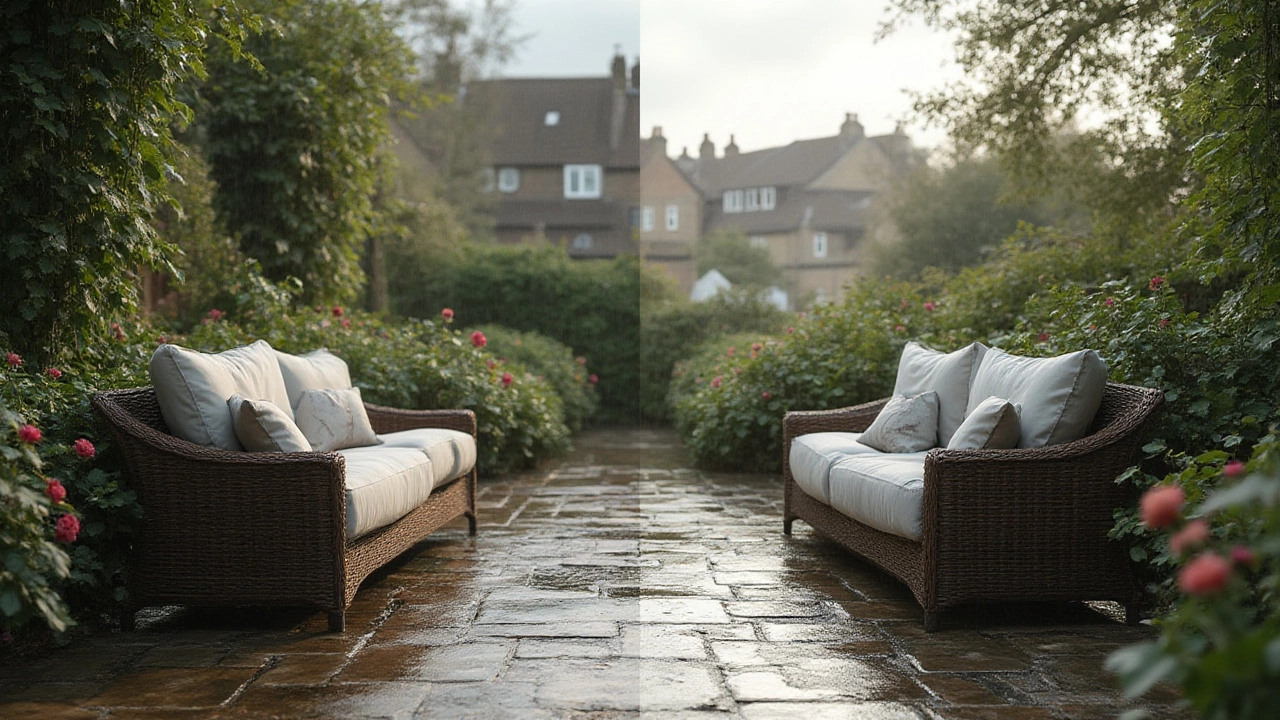
When Covering Every Night Actually Matters
Let’s be honest, tossing a tarp over everything isn’t always practical. Think about the hassle after a long dinner party: guests leave, you’re beat, and wrestling with a gigantic cover is the last thing you want to do. But, there are times when covering up is just the smart move. In areas with a lot of humidity, frequent night fog, or even just heavy dew, a nightly cover is almost like brushing your teeth — a habit that pays off.
Kansas State University did a field survey tracking patio use all year. They found that people living in the Midwest, South, or near big lakes reported visible nighttime condensation on their furniture nearly five nights a week during late spring and early fall. Folks in coastal or rainy climates had it even worse. If you deal with “surprise rain” overnight, or have frequent wind-driven dust or pollen, those covers end up saving you from endless cleaning.
Even for dry-climate folks, there are risks. Think about sudden dust storms or pollen bursts you didn’t see coming. Also, if your set is newer or expensive, you’ll want to keep that “just bought” look longer. Keeping covers handy isn’t about being fussy; it’s about not losing years of life off your investment for a five-minute shortcut. If there’s a storm warning, or you notice lots of tree sap or birds nesting nearby, that’s cue enough to get those covers on fast.
But if the forecast is flawless and humidity’s low, and you don’t have curious critters, skipping a night now and then probably won’t spell disaster. For lots of people, there’s a balance: quick covers during risky weeks, and the occasional “let it breathe” night during good weather. Here are some signs it’s definitely time to cover:
- Dampness on cushions or tabletops in the morning
- Frequent pollen, dust, or bird droppings
- Nearby construction, trees, or heavy traffic causing debris
- Regular storms or high humidity forecasts
- Pets or wildlife show interest in your patio area
The trick is knowing your space. If you invest in weather-friendly covers and set up a quick nightly routine, there’s less fuss. Some people keep covers rolled behind seating or in a storage box for easy access. The easier it is, the likelier you’ll do it when it actually counts.
How to Choose and Use the Right Patio Furniture Covers
Quality matters when we’re talking outdoor furniture protection. Not all covers are created equal, and tossing a thin vinyl sheet on your patio set is basically inviting disaster after a couple of seasons. Today’s best covers use treated polyester or heavy-duty canvas, with tight seams, elastic hems, and vents that let out moisture but keep rain and dust away. Cheap covers tend to crack or trap moisture underneath, which causes more harm than leaving furniture bare, according to a University of Kentucky climate durability study in 2022.
A well-made cover should fit snugly — too tight and you’re wearing down corners; too loose and wind or critters will sneak in. Look for ones with adjustable straps or toggles to keep things anchored. Integrated side vents make a big difference. They stop condensation from building up and keep mildew at bay. If your furniture has cushions, waterproof storage bins protect them better than leaving them on the chairs under a cover, especially during rainy seasons.
- Pick UV-resistant covers. Sun breaks down ordinary materials fast, even when you’re only covering up at night.
- Go for covers with reinforced corners and double stitching. They’re way less likely to rip when you pull them over odd-shaped loungers or tables.
- Check the inside lining — soft linings avoid scratches on shiny finishes.
- Don’t leave covers on for days during dry, cool spells. Furniture needs air circulation. Find a weekly or biweekly “airing out” schedule.
- Easy-off covers save your sanity. Some even come with zippers or color-coded tabs so you can manage them solo without a wrestling match.
You don’t have to obsess over the perfect size, but do measure your main pieces before you hit “buy.” Many companies offer matching sets for benches, tables, and even awkward L-shaped sectionals. Be sure to read past reviews focused on local weather. What works in dry Arizona might totally flop in coastal Oregon. There are even modular, clip-together covers for those with big or weirdly shaped setups.
Storage is the final piece. When covers aren’t in use, keep them dry and neatly folded in a deck box or storage bench. If they get wet or dirty, hose them off and let them dry before storing. Otherwise, trapped moisture can mean moldy covers — not much fun the next time you grab one in a hurry.

The Bottom Line: Should You Really Bother Each Night?
The honest answer: covering your patio furniture every single night isn’t strictly necessary — but it sure pays off in certain spots and conditions. If you live somewhere prone to humidity, dew, pollen, or wildlife, skipping a cover is rolling the dice. Even a couple of unprotected nights during the “bad” months can add up. If you’ve splurged on a fancy set, treating it right will save you real cash down the road. That said, if your climate’s dry and predictable and your patio isn’t the local animal hub, you can probably get away with skipping now and again, especially with weather-resistant pieces.
Make it easy on yourself. Invest in well-fitted, breathable covers, keep them close at hand, and find a routine that doesn’t feel like a chore. Patios are there for relaxing, not for giving you another job. But if you want your outdoor space to stay sharp season after season, a little night-time attention goes far. The next time you debate with yourself as night falls, just peek at the forecast and check for critters — then decide if tonight’s the night to tuck those chairs in or let them breathe. You’ll thank yourself years down the line when your furniture still looks good as new.



